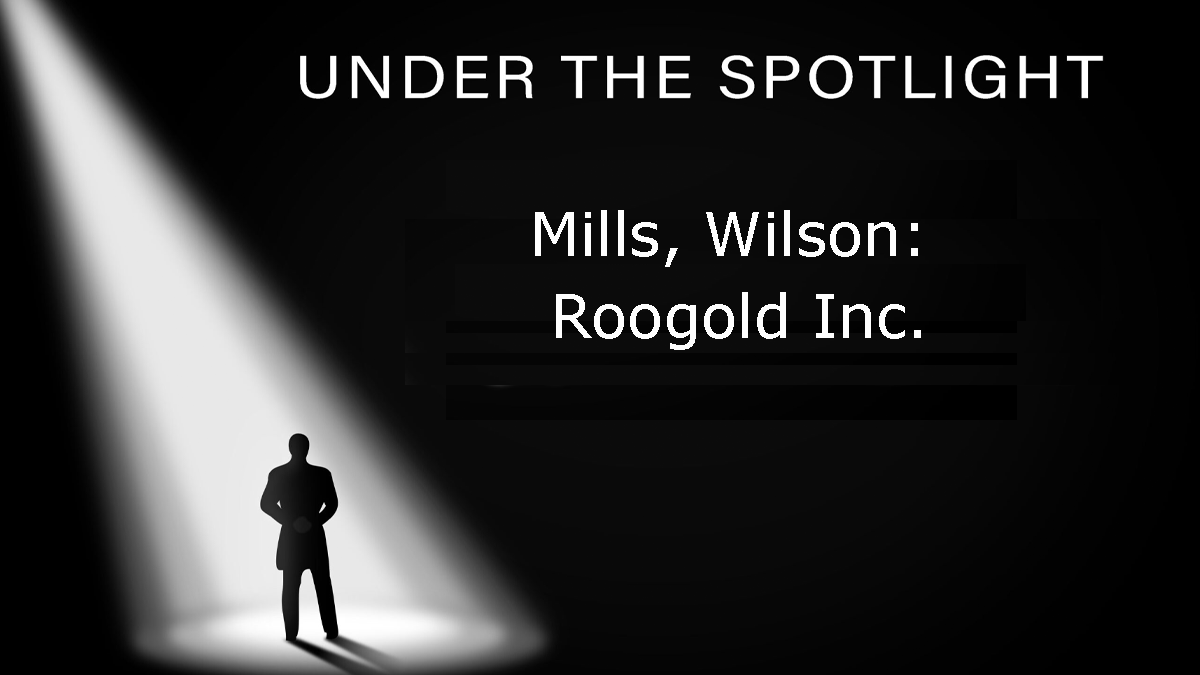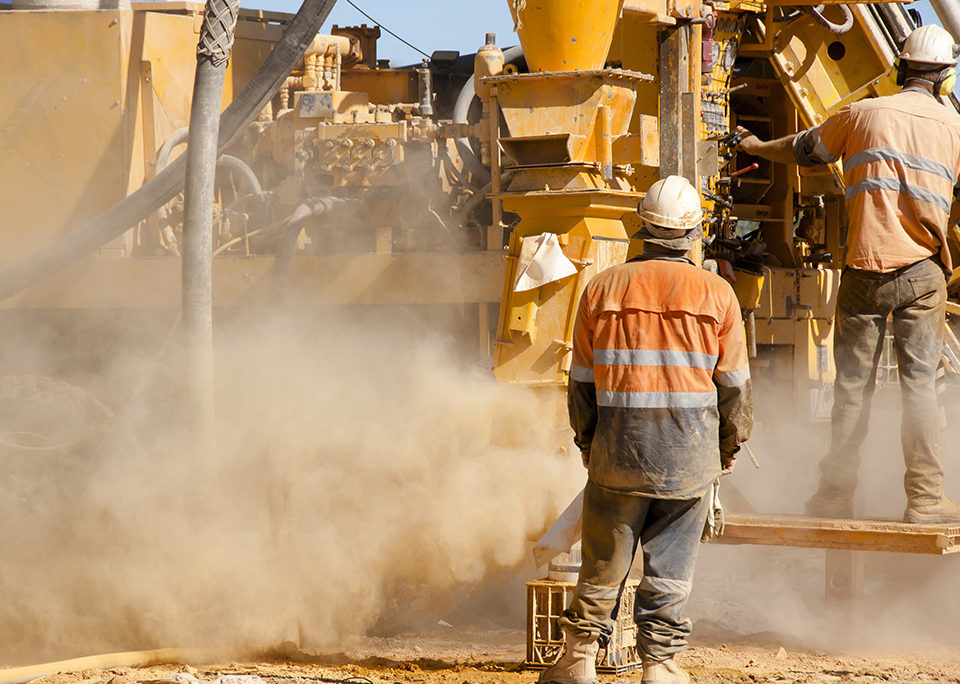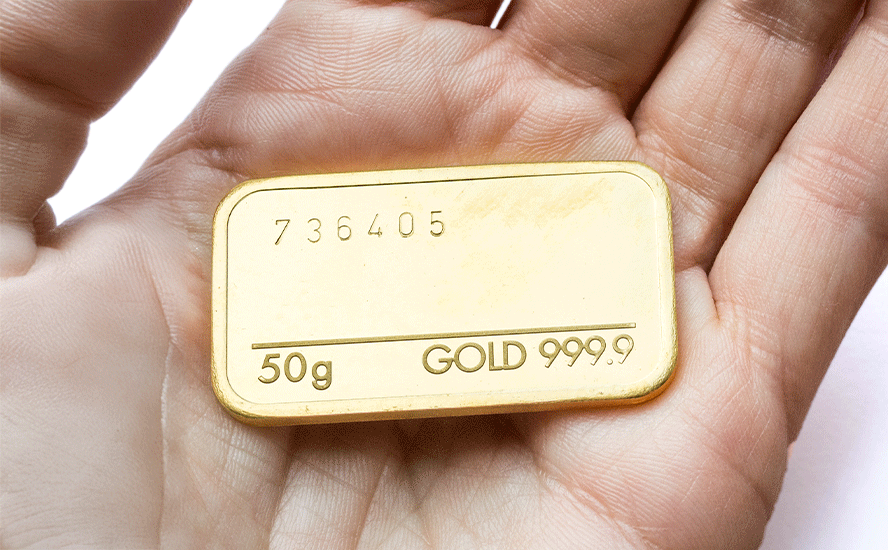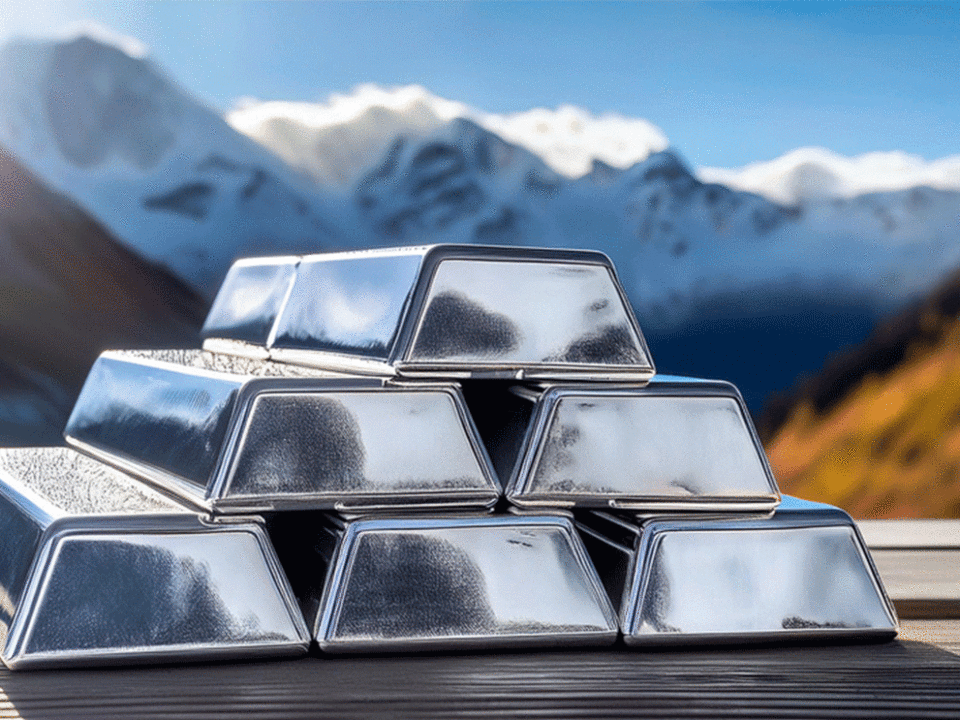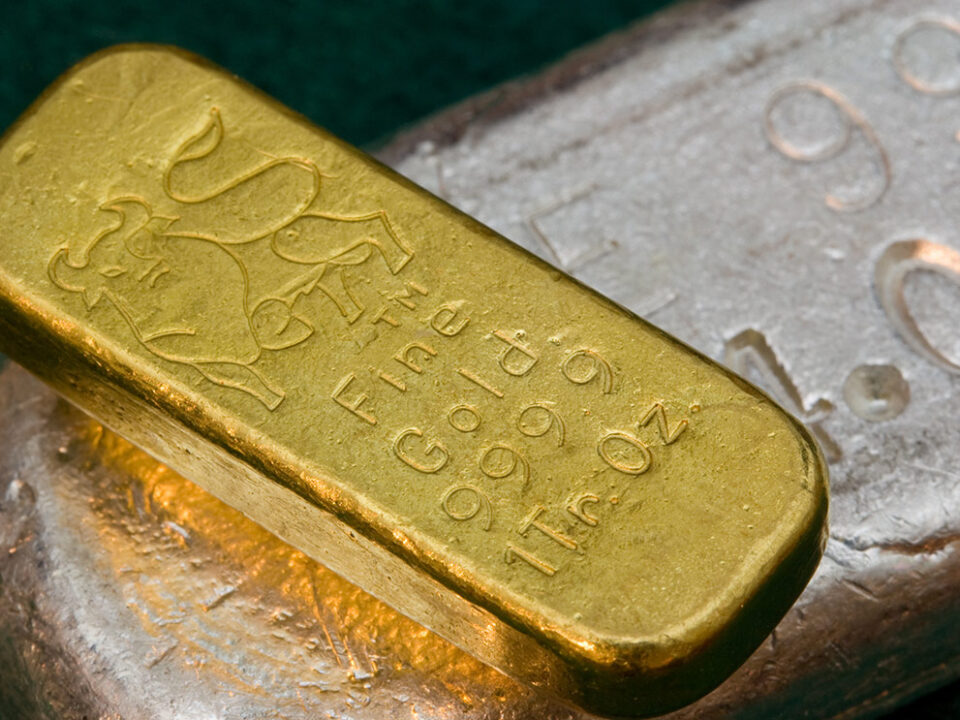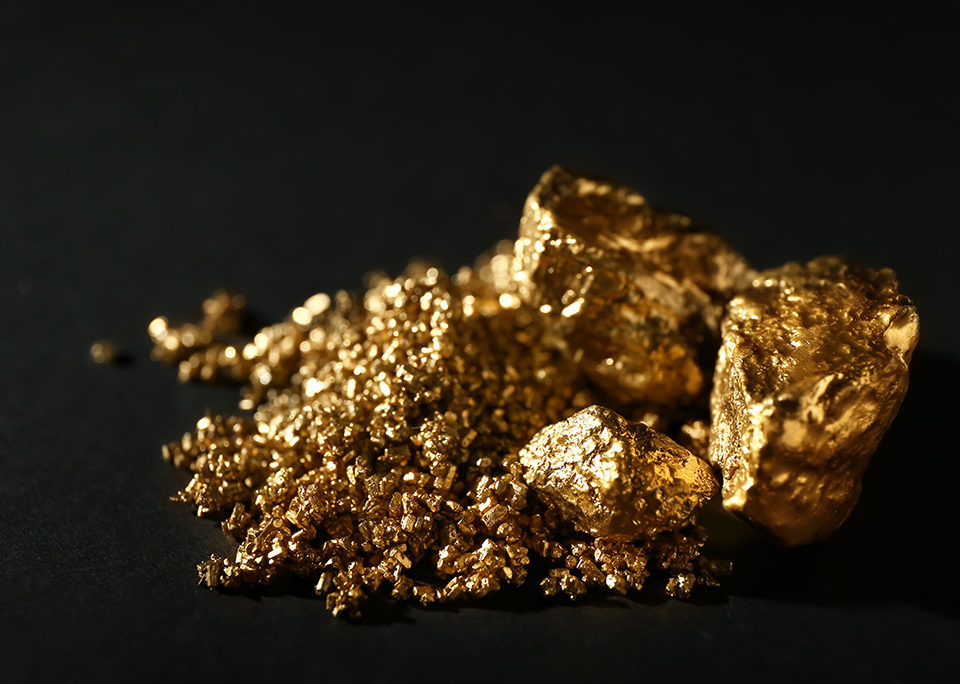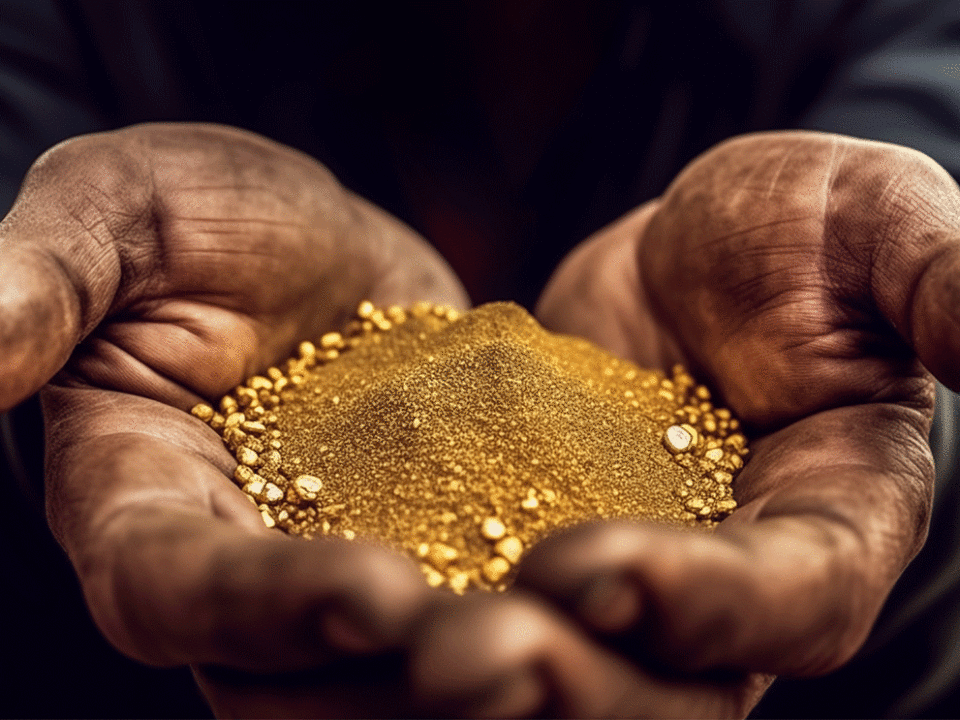Under The Spotlight – Mills, Wilson: Roogold Inc.
2022.03.18
Rick Mills: This morning we’re talking to Dr. Chris Wilson of Roogold (C:ROO). Chris spent 10 years with Robert Friedland’s Ivanhoe Mines as exploration manager for Mongolia responsible for an exploration portfolio of over 127 licensees for over 11 million hectares. Chris is a technical advisor to Roo Gold and was responsible for assembling Roogold’s land package.
Chris good morning, when I look at a company the first thing I want to review is the people on board.
I know a lot of people like to talk about the projects, they talk about share structure, myself I firmly believe that everything good about a company flows from management. The ability to acquire projects, the ability to finance them, the ability to move them forward with minimal dilution while you’re developing them, and the ability to tell a story not only to retail investors but to the institutional suits and larger investors who are actually going to put the money into the company to finance its progress.
So I consider management by far to be the most important thing in a company. You’ve put together quite a package of projects that we’re going to get into here in a little bit, but can you tell me about the amazing assemblage of talent you’ve put together here?
Chris Wilson: Certainly, we should start with Alexandra Bonner, the chief operating officer in New South Wales (NSW) Australia. That’s where the projects are, that’s where the activity’s going to be, you really need someone who knows their way around NSW.
We’ve got a portfolio of 13 gold and silver concessions covering 1,380 km2 which have 137 historic mines and prospects so we’ll be dealing with multiple landowners. Alexandra’s worked in New South Wales for almost 15 years, she’s been part of government initiatives and committees.
I think she’s well placed to have that balance of being a very good field geologist, who knows her way around New South Wales deposits, and she’s obviously got the mindset and the skillset to deal with the landowners, and as I said she’s known at government level.
So, it’s a really complete package we’ve got with Alexandra and she’s driven, she sees this as her opportunity. There are some very good people around her, people who have been filing for 40 years around NSW, can handle new applications, licenses, so she’s assembled a really good in-country team.
Carlos Espinosa, our new CEO, I know less about, but he’s been an absolute delight to deal with, he seems very balanced, he’s obviously had his connections into the market, but what I like about Carlos is he sort of hands the geology across, he’s not trying to micromanage here, I don’t know much about his history, I haven’t worked with him before, but first blush he’s going to let us get on with it, going to support, and he seems to have the ability to raise money.
I’ve been an exploration geologist for 35 years, 76 countries, I sort of took a leaf out of the early days of going into Mongolia with Robert Friedland when I was his exploration manager at Ivanhoe Mines. If you want to make a discovery you’ve got to have enough projects to do that, so I’ve taken the philosophy of 35 years of reviewing projects and working around Robert, into assembling this package.
Quinton Hennigh is known to most people as the rock star geologist, the visible face of a lot of companies, I know Quinton on a different level, what I like about Quinton is he’s a very astute geologist. He also sees the big picture of the markets and the direction you should be moving in. So, the value Quinton brings to the company is obviously the market perception of him, but also on a personal level and on a technical level, it extends to Alexandra and the team. Quinton is a good geologist who understands what should be done and how it should be done. So, from that perspective he’s extremely useful to myself to sound off against.
RM: The story that I read here is that you went looking for a place to assemble such a land package. Was New South Wales on the top of your list or was it something that you found afterwards? I’m asking why NSW and why did you settle there?
CW: I think to understand that we need to chart back 20 years. When the Soviet Union collapsed we were the first foreign geologists into Mongolia as the MiGs and the tanks left.
Two year later I was giving a presentation in Moscow on GKZ (Russia’s State Commission on Mineral Reserves) and the need for NI 43-101. At the time the West thought, throw a little money at the former Soviet Union, and that will give us our metal deposits for the next 20, 30, 40 years. At the end of the talk one of the professors said great talk Chris but you’re missing the point. We don’t need NI 43-101, we don’t need JORC, we’ve got enough money in country, and GKZ will do us just fine.
I don’t think anyone had a really good run through the former Soviet Union and look where we are now, large parts of the Middle East are a no go, mining regulation is changing through South America. I guess running with Robert for so long and having worked in 76 countries, there was this nagging thought process of well, where do we deploy our money this time? Where can we actually do business?
Australia was one of about five countries, Scandinavia and there was other countries, but Australia was right up there. I was reviewing projects for other companies obviously following Novo’s success in the Pilbara. But the Pilbara was pretty heavily staked. Victoria, on the back of Fosterville, was very heavily staked, and getting pricey, and there was Western Australia which is fantastic exploration ground but you can’t just go and stake ground you have to do a deal.
So after 100 years of exploration you’re deploying more money to look deeper, Australia was there but the obvious hot spots were taken. New South Wales stood out for several reasons, one there was ground available, two, the New South Wales government historical database was exceptional, and three a lot of the trends out of Queensland and Victoria were fairly easy to follow.
So we started looking at the database, what struck me is there had been a fairly substantial gold rush at the turn of the 20th century in NSW which at the time was a very remote place. Then along came World War I, then the Great Depression, World War II, and NSW being so remote got left behind, despite having had some very significant alluvial gold rushes. Then the discoveries started in the ‘80s.
So having selected Australia as a safe, and a logical place to be, NSW stood out as somewhere you could assemble this package of ground, the diversity of deposit type, high-grade gold and silver, enough space to swing a cat and make a discovery. This was a concept that’s been 25 years in the making. I think NSW is increasingly going to be a place where companies will deploy money.
RM: When you focused in on NSW, you had four key criteria to build Roo Gold’s portfolio.
CW: Technically the criteria had to be high grade, it had to be 100% ownership, we wanted multiple showings, and we wanted to be on major structures (which provide the fluid pathways for mineralizing fluids) and associated arcs. In addition, prospecting by the old timers has saved us a lot of money at start-up. Gold and silver are the prime commodities.
RM: You settled on basically large regional structures in the Lachlan Orogen and the New England Orogen.
CM: Structure to me is absolutely fundamentally important. There have been some downsides to working in 76 countries but the upside is you get to see a lot of rocks and you get to understand a lot of things. You’re not a master of anything but you have a good feel for things.
I’ve been lucky enough to work on a type of deposit called a listwanite-hosted gold deposit, that was the Bralorne in British Columbia, Canada and the Motherlode in California. Both of those were hard rock deposits that were essentially found on the back of the alluvial rushes, what they are is basically a continental collision that’s caught ocean floor between them.
They tend not to have a lot of quartz at surface, but they shed alluvials, and the quartz discoveries come afterwards. I’ve also worked on them all through Saudi Arabia where they were consistently finding 3 to 5 million ounce deposits.
The Peel Manning Suture Zone in the New England Orogen has shed over a million ounces of alluvial gold. You have quartz-carbonate altered ophiolites as is the case at Motherlode and Bralorne. All the hallmarks of a very fertile system. We were able to stake free ground along the Peel Manning suture and associated splays. In total we acquired 5 concessions, each with historical workings which had targeted high grade quartz lodes. We have a sixth concession under application.
So we’ve got a fairly commanding package out there. It was really these things that drove us, we wanted to be on these big structures, we wanted to try and consolidate land within those areas, and that’s what we did.
RM: We can see by looking at a map of the projects, that the showings and the prospects and the old mines are all centered along these large structural faults. The last news release gave an update on your 2022 programs and you were concentrating on the Peel Manning. You’ve got 30 km of untested strike on the Peel Manning structure and you have two significant undrilled gold trends measuring over 7 km of strike length
CW: Let’s talk arcs and put them into perspective. If you come down the west coast of the Americas, you’ve got the Pacific plate subducting eastwards, resulting in volcanoes and earthquakes, and lots of associated mineral deposits. Over millions and millions of years the Pacific Plate will stop spreading, continents will collide, and you’ll then have a former subduction-related magmatic arc stuck within a continental land mass. This is what you have through New South Wales. Multiple suture zones or former crustal boundaries with associated arcs and arc-related mineral deposits.
So just from a regional perspective the Peel Manning always struck us as the place we’re probably going to want to start. As I said it’s a crustal suture, it’s 350 km long, it’s shed alluvials, and we know globally that they’re extremely important deposit types but often misunderstood.
Our geologists are out there now and people are still panning gold along the rivers out there, there’s plenty of alluvials and they’re finding gossanous areas with quartz veins.
It’s starting to show all the hallmarks of what we’re looking for. Access is good and we’ve had a positive response from landowners so far. The five licenses on this big regional structure was the obvious place to go. I think that’s where the focus of the work will be for the next two or three trips.
RM: You are a big believer in more is better.
CW: One of the things I’ve learnt over the years is exploration is a game of statistics. So even if you’ve got the best portfolio in the world, they’re not all going to make it. So what we’ve tried to do, by going at the high-grade historical structures & workings, is move ourselves up the chain on acquisitions.
These projects are a little more advanced than your normal early-stage. I’ve said we’re not going to settle on one concession with 15 occurrences, we went for as much as we could possibly get, because then statistically you have a real chance at discovery.
When we went into Mongolia everyone said you guys are crazy. Why would want to find another 0.4% copper in the middle of the Gobi Desert? Well no-one had put it together that you could find the third highest grade copper-gold porphyry in the world. New South Wales has the same feel, it’s not to say that there is going to be that discovery, but we’ve got sufficient size and diversity on these big structures to have a real shot at discovery. And that was important.
Of course, the thing to understand is you can’t go out and grab this land holding if you’ve got stupid joint ventures, claw backs, triggers and option payments. I wanted to roll these concessions into Roo at 100%. I didn’t want the market to have to look at Roo Gold and say oh they’ve got some big payments coming up to one of the finders, Chris Wilson. That might have suited me well, in terms of the cash payment, but I’m here for discovery and I prefer to have stock.
But getting these licenses at 100% with no royalty claw backs or staged payments etc. it sets us in a really good position to hold a big land package. Then you add to that the holding costs, and the commitment costs in New South Wales, we’re committed for AUD$25,000 per concession, in year one, and $50,000 in year two. So the holding costs aren’t large.
The point I’m making is you can only go out and have this land package if technically it really is going to help de-risk your exploration chance, and you can only hold it if the deal structure, and the holding costs, and the annual costs and the filing costs are all acceptable for an emerging junior.
That comes back to your first question about why Australia. The cost to the NSW government, the way we were able to structure the deal, the ability to jump in a 4WD and drive out there safely, without having to worry about anything, it all comes together as probably I think one of the best places in the world to be, and one of the few places in the world where a junior can hold such an eye-catching portfolio, that statistically has a much better chance than most of the fish we swim with in the junior pond.
RM: Excellent. We’ve talked about New South Wales, we’ve talked about the projects, we’ve even drilled down into the Peel Manning fault system and why there. What are the next steps for Alexandra?
CW: I’m a great believer in keeping it simple. Writing 43-101s and internal reports staggered me in how many times companies do things that don’t make sense. People will get 20 rock chips off a deposit and then do an IP survey. Well that just tells you there’s something chargeable at depth, it could be graphite it could be pyrite.
So, on the back of a very few rock samples they go and spend a lot of money to do something that doesn’t add value, in fact for me, that becomes a red flag. Why would you go and fly airborne, or LiDAR, run an IP survey, why would you do all of those things before you’ve really demonstrated you’ve got something, where those scientific techniques are justified and will add value?
We keep it simple. We’ve got 167 showings, past workings, shallow, where they’ve reported multi-ounce material in gold, so the idea really is two-fold, one you need to have access permissions in place, NSW has a very stock standard contract that’s offered to landowners, so it’s a meet and greet. Most people in outback Australia are happy for you to be on the ground, times have been tough out there so they’re not going to stand in the way of perhaps an opportunity, so in general, the access is good the further west you go. So the first thing Alexandra will be doing is meeting and greeting.
Once we get that access, or parts of the access, then it’s a matter of getting into the historic workings. Why would we go and re-visit what the old-timers did? During these gold rushes they had people on horseback scouring every inch of this ground. They had sharp eyes, they may not have understood the geology but they were looking for the obvious score, which was visible gold or high-grade silver.
So for 20 or 30 years the old-timers were out there Waltzing Matilda all over New South Wales saving us an awful lot of work and they were extraordinarily good prospectors. They didn’t waste time, they had to pack everything in on horseback so they got out there and they found what made sense.
Once we have access it’s a matter of getting into the areas that they have already worked, because that’s where the obvious high grade stuck out of the ground. And it’s important to focus on the high grade, because what you’re actually asking yourself is, is this prospect worth following up? What do the rocks at surface tell us about the mineralization? Is it the type of mineralization, is it extensive enough to warrant us coming back and doing more studies and drill targeting?
You don’t want to go out and do an esoteric, academic study that maps every rock because your first question is, is it worth coming back to try to progress this project? And the best way to do that is to focus on the high grade, we’ve been gifted decades of really good prospectors who put us on the high grade. So it’s access, get onto the past production areas, known prospects, collect the rocks, get them in for assay, and understand them.
It’s an extremely cost-effective, low-cost way of working yourself through over 150 past production/ small-scale production/ historical production prospects and areas.
RM: Boots on the ground prospecting.
CW: When you’ve got 167 past workings and showings you need a hammer, a hand lens, a bag to put rocks in and a sense of humor. It’s simple stuff, just get out there and hit the rocks and work it out. Get the access, hit the rocks and hopefully, you bring in clever people to do clever things and drill targeting happens. Very simple.
So yeah, it’s a lot of boots on the ground.
As to getting the access, it’s not going to be instant, it’s going to take hard work, it’s going to be a bit of a grind. But people can be quite dismissive about it saying, oh well you haven’t got access to here or there. Well I say what would you prefer? Having us work through a couple of weeks of talking to receptive landowners to drive with a 4WD out to somewhere in NSW where you can walk around, or having a six-month window dealing with six government agencies and first nations, and having to do everything in a summer only season from a helicopter up in the north of Canada or Alaska.
Again we come back to why Australia?
A little bit of patience is required from shareholders but it will all fall into place. And as our access comes we’ve got this huge landholding, with things sticking out of the ground that desperately need a look.
And just to throw a bit more into the equation, I guess I’m a really difficult bugger to live with because I’m never satisfied, I want to keep looking for more things, I’m on the hunt. You’ve always going to be on the hunt, you’ve always have to be looking for the next one. It doesn’t matter if you’ve got the best ground in the world, the next discovery might be round the next corner or under the next rock. To find the next big one you just have to keep looking provided it doesn’t wreck the bank, and there’s a sense of all-sustainable, value-added addition to the portfolio. We’re going to be nimble, we’re going to be focused.
RM: I hear that, I like the story and in fact I don’t mind it taking a little while you know to really ramp up, it enables me to establish a decent position. I bought the last private placement and I’m buying in the market.
CW: Good stories take time to build as long as you’re not sitting back on a big salary wine and dining, it takes time but it’s funds well spent sensibly, value-add, you can’t ask for anything more.
RM: It used to be when I got into this business, and I know you know this but when I started in this business a couple of decades ago, you looked at management, but you also wanted to know the share structure and you talked to management and you asked them how much did you raise last year and what percentage of it went into the ground? And if it was anything less than 70-75% you kinda looked at them, and asked what were you spending the money on?
Today that’s all out the window. Share structures are blown out to 250 million outstanding shares. Just 20% to 30%, if you’re lucky, actually goes into the ground. When the win comes you have diluted shareholders so badly it’s nowhere near the win it could have been, because of unnecessary dilution. And a story like this maybe it should resonate with investors who actually put their money behind people who actually spend it on boots-on-the-ground exploration looking for a discovery.
CW: Absolutely I mean someone said the other day is it a jolly? I had to get a dictionary and look up what a jolly was, I think it’s a North American term, no it’s not a jolly. Management has been extraordinarily tight with the money. It’s very very difficult to get anything signed off that isn’t in the ground.
No-one’s on a big salary and nothing gets invoiced that isn’t directly related to exploration. Now of course that’s going to change a little bit as you do your annual filings, you have to have your necessary evils, your accountants and lawyers. We’re not getting around that so there is going to be a cost of doing business. But outside that cost of doing business, which is pretty much the same for every junior out there, every issuer, then it’s how much of the residue you put in the ground versus lunch, wine and dining.
There is a place for marketing. We live in a world where without it you’re not going to do very well, so you have to be telling your story, the trick is to balance that marketing with real value-add. If you can keep punching out news releases that are value-add, with access granted and rocks hit, and get the market in tune, that’s going to work fine. But you have to keep putting that money in the ground. That’s the essential.
RM: That’s the key to discovery isn’t it? You talk about the statistics of having a large property with multiple showings and you work through them. The stats say the more you got, the more you check out the better your chances are for discovery. And yes you have to tell the story, you have to do everything you’re saying, but you have to spend the money properly to get where you want to go.
I like the way you’re looking at things and going about it. You’ve obviously had a hell of a lot of experience in exploration and discovery. I think when the story gets out, and people start to realize what’s going on here, I think it’s going to be a very popular story.
CW: I hope so, we’ve done everything right in terms of putting the portfolio together. I started off by talking about the former Soviet Union, and other parts of the world. There’s a lot of companies stuck in countries that are going to go nowhere. So, where’s the risk profile? When people say they didn’t find anything in the last 80 years, well they weren’t looking in the right places, they weren’t looking as we’re looking, they weren’t going back to these projects, using the passed down old timers knowledge properly, NSW is just an extraordinarily good place to be.
The other thing is if gold turns, silver turns, that rising tide will float all juniors, but there’s nothing like a couple of discoveries in your vicinity to give you that select high tide and I think New South Wales is ripe for some really good discoveries. There’s a lot of activity down there in the juniors. So when that tide starts to lift all juniors I think NSW has a chance to lift a lot higher. And that shouldn’t be overlooked either. We’re going to do our best.
RM: Thank you very much, Chris.
Richard (Rick) Mills
aheadoftheherd.com
subscribe to my free newsletter
Legal Notice / Disclaimer
Ahead of the Herd newsletter, aheadoftheherd.com, hereafter known as AOTH.
Please read the entire Disclaimer carefully before you use this website or read the newsletter. If you do not agree to all the AOTH/Richard Mills Disclaimer, do not access/read this website/newsletter/article, or any of its pages. By reading/using this AOTH/Richard Mills website/newsletter/article, and whether you actually read this Disclaimer, you are deemed to have accepted it.
Any AOTH/Richard Mills document is not, and should not be, construed as an offer to sell or the solicitation of an offer to purchase or subscribe for any investment.
AOTH/Richard Mills has based this document on information obtained from sources he believes to be reliable, but which has not been independently verified.
AOTH/Richard Mills makes no guarantee, representation or warranty and accepts no responsibility or liability as to its accuracy or completeness.
Expressions of opinion are those of AOTH/Richard Mills only and are subject to change without notice.
AOTH/Richard Mills assumes no warranty, liability or guarantee for the current relevance, correctness or completeness of any information provided within this Report and will not be held liable for the consequence of reliance upon any opinion or statement contained herein or any omission.
Furthermore, AOTH/Richard Mills assumes no liability for any direct or indirect loss or damage for lost profit, which you may incur as a result of the use and existence of the information provided within this AOTH/Richard Mills Report.
You agree that by reading AOTH/Richard Mills articles, you are acting at your OWN RISK. In no event should AOTH/Richard Mills liable for any direct or indirect trading losses caused by any information contained in AOTH/Richard Mills articles. Information in AOTH/Richard Mills articles is not an offer to sell or a solicitation of an offer to buy any security. AOTH/Richard Mills is not suggesting the transacting of any financial instruments.
Our publications are not a recommendation to buy or sell a security – no information posted on this site is to be considered investment advice or a recommendation to do anything involving finance or money aside from performing your own due diligence and consulting with your personal registered broker/financial advisor.
AOTH/Richard Mills recommends that before investing in any securities, you consult with a professional financial planner or advisor, and that you should conduct a complete and independent investigation before investing in any security after prudent consideration of all pertinent risks. Ahead of the Herd is not a registered broker, dealer, analyst, or advisor. We hold no investment licenses and may not sell, offer to sell, or offer to buy any security.
Richard owns shares of Roogold Inc. (C:ROO). ROO is a paid advertiser on his site aheadoftheherd.com
Legal Notice / Disclaimer
Ahead of the Herd newsletter, aheadoftheherd.com, hereafter known as AOTH.Please read the entire Disclaimer carefully before you use this website or read the newsletter. If you do not agree to all the AOTH/Richard Mills Disclaimer, do not access/read this website/newsletter/article, or any of its pages. By reading/using this AOTH/Richard Mills website/newsletter/article, and whether you actually read this Disclaimer, you are deemed to have accepted it.

